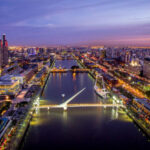We explain everything about Argentina and its physical and cultural characteristics. In addition, how is its economy, religion and the history of this country.
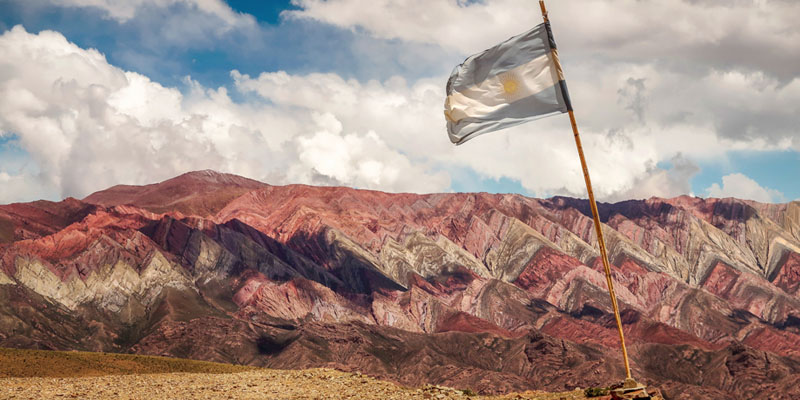
Argentina
Argentina is a national state located at the southern end of South America whose official name is the Argentine Republic. Its territory is divided into 23 provinces and the Autonomous City of Buenos Aires, which is its most populous capital and city.
The Argentine Republic has a total area of 2,780,400 km2, which makes it the second largest country in South America after Brazil. It limits west with Chile, northwest with Paraguay and Bolivia and northeast with Brazil and Uruguay.
Argentina was a Spanish colony until 1816, the year of its independence. Therefore, his customs and traditions mix Spanish inheritances, of the immigrants he received since the end of the 19th century and native peoples that survived the conquest of America.
Currently Argentina has a democratic, republican and presidential political systemand is one of the founding countries of international institutions such as the UN, Mercosur, OAS and Unasur.
Why is it called that? The name “Argentina” comes from Latin Argentum, which means “silver.” It is believed that it was the Spanish poet Martín del Barco Centera who appointed in 1602 for the first time as “Argentina” to the lands near the Río de la Plata.
- See also: Buenos Aires
Characteristics of Argentina
- Its population is 46,044,000 inhabitants.
- It has an area of 2,780,000 square kilometers, which represents a population density of 16.5 inhabitants per square kilometer.
- Its capital is the city of Buenos Aires.
- It is part of Mercosur, Unasur, OAS and the UN.
- Its predominant climate is the temperate oceanic.
- Its predominant reliefs are the Andes mountain range in the west of the country and the Chaco-Pampeana plain in the east.
- The official language is Spanish and the predominant religion is the Catholic.
- Tango is one of its most characteristic cultural expressions.
- Its main economic activity is agriculture, and is one of the world’s main producers and exporters in the world.
- The official currency is the Argentine peso, and its main economic partners are Brazil, the United States and China.
Extension, population and capital of Argentina
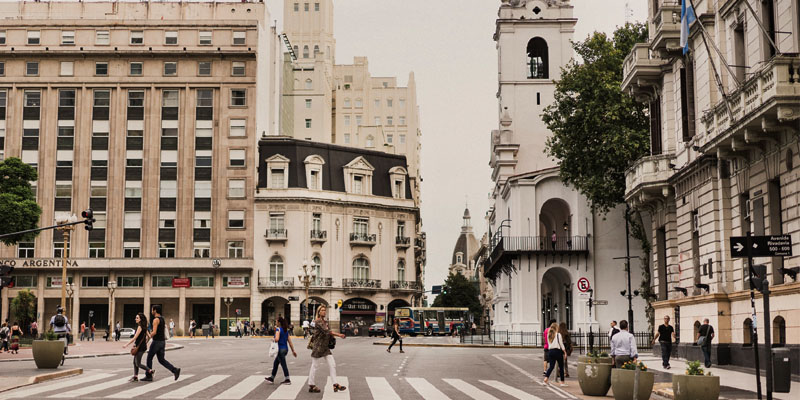
Argentina is divided into 23 provinces and an autonomous citythe Autonomous City of Buenos Aires, which is the capital of the country.
The city of Buenos Aires is located in the center-east of the country, On the banks of the Río de la Plata, and its territory is divided into 15 communes in which 3,120,000 inhabitants inhabit. It is an autonomous territory chaired by a head of government and that has its own executive, legislative and judicial power and its own security forces. Its metropolitan area includes more than 40 games from the province of Buenos Aires and reaches a population of 14 million inhabitants.
For its part, The provinces are jurisdictions that also have their own political organization and have executive, legislative and judicial power. Its territory is divided into departments or parties that are formed by municipalities.
The Argentine provinces are:
- Buenos Aires. It is located in the Pampas region and is the most populous Argentine province. Its capital is the city of La Plata.
- La Pampa. It is located in the Pampas region and its capital is the city of Santa Rosa.
- Cordova. It is located in the Pampas region and its capital is the city of Córdoba, which is the second most populous city in the country.
- Santa Fe. It is located in the Pampas region and its capital is the city of Santa Fe. Its most populous city is Rosario, the third most populated in the entire country.
- Entre Ríos. It is located in the northeast region (NEA) of the country. Its capital is the city of Paraná.
- Corrientes. It is located in the Northeast Region (NEA) and its capital is the city of Corrientes.
- MISSIONS. It is located in the Northeast Region (NEA) and its capital is the city of Posadas.
- Formosa. It is located in the Northeast Region (NEA) and its capital is the city of Formosa.
- Chaco. It is located in the Northeast Region (NEA) and its capital is the city of Resistencia.
- Salta. It is located in the Northwest region (NOA) and its capital is the city of Salta.
- Jujuy. It is located in the Northwest region (NOA) and its capital is the city of San Salvador de Jujuy.
- Tucumán. It is located in the Northwest region (NOA) and its capital is the city of Tucumán.
- Santiago del Estero. It is located in the Northwest region (NOA) and its capital is the city of Santiago del Estero.
- Catamarca. It is located in the Northwest region (NOA) and its capital is the city of San Fernando del Valle de Catamarca.
- Rioja. It is located in the Northwest region (NOA) and its capital is the city of La Rioja.
- San Luis. It is located in the region of Cuyo and its capital is the city of San Luis.
- San Juan. It is located in the region of Cuyo and its capital is the city of San Juan.
- Mendoza. It is located in the region of Cuyo and its capital is the city of Mendoza.
- Neuquén. It is located in the Patagonian region and its capital is the city of Neuquén.
- Black River. It is located in the Patagonian region and its capital is the city of Viedma.
- Chubut. It is located in the Patagonian region and its capital is the city of Rawson.
- Santa Cruz. It is located in the Patagonian region and its capital is the city of Río Gallegos.
- Tierra del Fuego. It is located in the Patagonian region and its capital is the city of Ushuaia. Its official name is Tierra del Fuego, Antarctica and South Atlantic Islands.
Climate, relief and hydrography of Argentina
Due to the extension of its territory, Argentina is a country that presents different types of climates. The characteristics of the climate according to each region are:
Climate in the Northeast Argentine
The climate of this area is warm subtropical with humid and very hot summers and short and fresh winters, and rainfall descends from this to west. Maximum temperatures in summer usually exceed 30 ° C and in winter do not descend from 10 ° C. In this region they form extensive and caudalous rivers, and also estuaries and bathed as a consequence of abundant rainfall.
Climate in the Argentine Northwest
It is a region in which two different reliefs coexist: a lower area, in which there are high temperatures and abundant rains, and a more arid mountainous area, in which the weather is dry and hot. Temperatures range from 4 ° C minimum in winter and maximum of 30 ° C in summer. It is a region that is characterized by its mountains and hills, and rainfall is concentrated in the summer. The rivers of this region notoriously reduce their flow in the winter.
Climate in the Pampas region of Argentina
The climate of this area is tempered oceanic, summers are warm and fresh winters (with frost but with low probability of snowfall). Summer in this region has an average temperatures between 20 and 30 ° C and rainfall, and winter usually has temperatures between 10 and 20 ° C. It is characterized by being an extensive wavy plain that is used, for the most part, for the practice of agriculture. It is crossed by extensive and caudalosos rivers that are used for the navigation of large ships used for foreign trade in the country.
Climate in the region of Cuya Argentina
The climate of this area is tempered semi -arid with high temperatures during the summer and low in the winter. The few rainfall occur in the winter. It has the climate and relief conducive to the cultivation of the vine and is a region famous for its wines. The area of which is characterized by the presence of the Zonda wind, a strong, hot and dry wind that transports a large amount of dust. Its relief has plateaus and mountain chains among which the Andes mountain range (which runs through the country from north to south) and that houses the Aconcagua, the highest peak in America with 6961 meters high. Its rivers and streams are born in the mountain range and descend at high speed forming rapids used for rafting practice.
Climate in Argentine Patagonia
It is the southernmost area of the American continent and its temperatures descend from north to south. There is an area known as “Patagonian forests”, which is cold and wet, and an “Patagonian steppe” area, where winds lose moisture and region becomes a dry and arid zone. The rivers are generally short and not very caudal.
The relief of Argentina is characterized by the presence of large plains in the east of the country. The most important is the Chaco-Pampeana plain, which covers approximately 30 % of the country’s surface.
Another important relief is the Andes mountain rangewhich extends from north to south in the western sector of the country. The two most important plateaus in the country are the Patagonian and the Missionary. Patagonian is the most extensive, and is located in the south of the country. The missionary plateau is in the north, and has less extension.
- See more at: Argentina’s climate
Argentina’s flora and fauna
The flora and fauna of Argentina is very varied and change according to the different geographical regions.
- Northeast. In this area, vegetation is abundant, plants are high and dense and wet forests and jungle plants are frequent. The animals that can be seen in this region are monkeys, toucans, pumas, jaguares, tapirs and carpinhos. The vegetation stands out aquatic plants, palm trees, carob trees, Aguaribayes, poplars, willows, lapachos, reeds, timbos, among others.
- Northwest. In this area, vegetation and fauna change according to each type of relief and climate. To the west (in the provinces of Salta, Jujuy, Catamarca, San Juan, La Rioja and Tucumán), the weather allows flames, vicuñas, pumas, snakes and foxes and, in areas of height, in areas of height, you can see Águilas and Condores. The flora in this area is scarce, with abundance of cactus and low floors. In the Yungas area there is a wide variety of vegetation with species such as laurels, cedars, orchids and mosses.
- Pampas region. This area is formed by plains that allow sheep, horses and cows. In addition, they are native animals of this region, the partridge, the ñandú, the carpincho, the hairy, the Biscay, the fox, the lizard overo and the zorrino, among others. As for vegetation, agricultural production of grasses (such as wheat, corn and barley) is popular thanks to the great presence of humus on the ground, which makes this area one of the most fertile regions in the country. There are no large native trees in the downtown area, with the exception of the ombú and other species that grow on the margins of water courses, so pastures such as the brave straw, the flying straw, the colored grass, among others. Some of the trees introduced in this area are eucalyptus and pine. Much of the native flora and fauna of this region is strongly reduced by the expansion of the agricultural border and soybean cultivation, the most important for the country’s export economy.
- Whose. This area is characterized by being arid and desert, so the vegetation that is usually growing is xerophilic type. Some common species are carob, shin, chañar, felling, viscote, aromo, jarilla, alpataco, chilca and cactus. The animals that live in the area of Cuyo are the Andean condor, the puma, the Andean mouse, the hare, the owl, the ñandú, the comadreja, the guanaco and the fox, among others.
- Patagonia. In this area the trees are low by the intense winds that characterize the region and the grass is generally dry as a result of the few rainfall. However, in the forest area there are Arrayanes, Coihues, Alerces, Amancays, Cipreses, Lengas, Maitenes, among others. As for fauna, insects (such as arachnids and scorpions), snakes and vipers, lambs, horses, deer, hares, foxes and armadillos. In the maritime coast areas there is a wide variety of fish and mammals such as the Franca whale, the penguins and the morsas.
Culture of Argentina

Argentina is a very broad and diverse country with traditions and festivities that vary according to the geographical region. Many of the customs have their origin in the traditions of the native inhabitants of America, and many others occurred for the multicultural fusion produced by immigrants who arrived in the country in the 19th and 20th centuries, mainly from Italy and Spain.
The religion that most of the inhabitants of Argentina is Catholicism (Inherited from the culture of Spain). However, the freedom of worship reigns in the country, so other religions such as Judaism and Protestantism, among others.
The majority of the Argentine population speaks SpanishHowever, a portion of the inhabitants uses the native American languages such as Quechua, Mapuche, Aimara and Guaraní, among others.
Argentina is a country that is characterized by great cultural development, in areas such as lyrics, music and theater.
- Literature. A genre of this country is gaucho literature, and the work Martín Fierro (1872), by José Hernández, is the main exponent of the genre. Some of the precursors of Argentine literature were Esteban Echeverría, Domingo Faustino Sarmiento, Alfonsina Storni, Victoria Ocampo, Silvina Ocampo, Alejandra Pizarnik, María Elena Walsh, Griselda Gambaro, Ernesto Sábato, Jorge Luis Borges, Julio Cortázar, Adolfo Bioy Casares, Roberto Arlt, Leopoldo Lugones and Ricardo Güiraldes.
- Music. Some representative musical genres are tango (in the Rioplatense area), La Chacarera (in provinces such as Santiago del Estero), El Chamamé (in El Norte Santa Fe province), among others. Many of these genres also have their own dances, such as chamamé, tango and malambo. Some of the most important musicians in the country’s history are Carlos Gardel, Astor Piazzolla, Mercedes Sosa, Martha Argerich, Charly García, Luis Alberto Spinetta, Nini Marshall and Tita Merello.
- Art. The Purilidian Puayrredón painter was one of the pioneers of Argentine painting. From the mid -nineteenth century and in the twentieth century artists such as Florencio Molina Campos, Antonio Berni, Raúl Soldi, Xul Solar, Benito Quinquela Martín, Emilio Pettoruti, Marta Minujín, Leonor Fini, Raquel Forner, Eduardo Sívori, Norah Borges and the sculptor Lola Mora, among others.
- Gastronomy. Argentine gastronomy has its roots in the influences of American native peoples and immigrants from the Middle East, Africa and Europe. Livestock development made Argentina a meat consumer country. Among the main dishes are the choripán, the roast, the milanesas, the locro, the tamales, the empanada. Due to the great milk production, the dulce de leche (made of milk, sugar and bicarbonate) is the protagonist in the Argentine pastry and in products such as alfajores. Mate is the main infusion of Argentines and wine is the national drink.
- Sport. The most popular sport in Argentina is football. In addition, motoring and boxing have a large number of followers. National sport is the duck, a discipline that takes place on horseback, and there is also a strong tradition in the pole. Other extended sports in Argentina are basketball, volleyball, grass hockey, tennis, rowing and cycling.
Tango is a musical genre and a type of dance of the Rioplatense zone, considered Intangible Cultural Heritage of Humanity. It emerged in the popular neighborhoods of cities such as Buenos Aires and Montevideo (Uruguay) at the end of the 19th century as a form of expression of immigrants and Creoles. It stands out for its emotional lyrics, the use of lunfardo words and the use of instruments such as bandoneon, guitar, violin, piano and double bass. The dance is performed as a couple, with movements such as the cut and the ravine.
Homeland symbols of Argentina
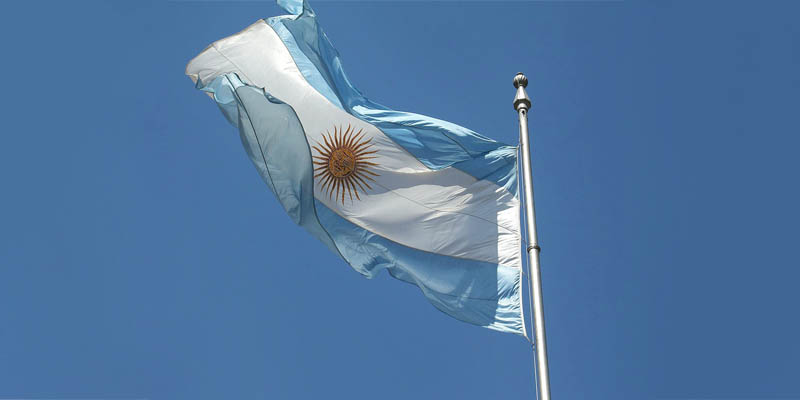
The national symbols that represent Argentina are:
- The Argentine flag. It was created in 1812 by Manuel Belgrano and is formed by three horizontal stripes. The upper and lower strip are light blue and the medium is white and has a golden sun with 32 rays in the center.
- The Argentine National Anthem. It was written by Alejandro Vicente López and plans and composed of Blas Parera in 1812-1813. On May 11, its day is celebrated.
- The Argentine shield. Designed in 1813, it has an oval shape and inside a red frigio hat on a spicy sustained by two human arms. The oval structure is bordered by laurels and a golden sun.
In Argentina, two main national dates are celebrated: on May 25, the day on which the anniversary of the May Revolution and the formation of the first national government and On July 9, the day in which independence is celebrated.
Other important national dates in Argentina are:
- June 20. Day in which the death of Manuel Belgrano (creator of the flag) is commemorated.
- March 24. Memory day for truth and justice in commemoration at the beginning of the last military dictatorship in the country.
- April 2. In honor of the fallen in the Malvinas War
- August 17. In honor of General José de San Martín, liberator of the country.
- October 12. Day of respect for cultural diversity in commemoration at the beginning of the conquest of America
- November 20. National sovereignty day in commemoration of the battle of the Vuelta de Forced.
Economic Activities of Argentina
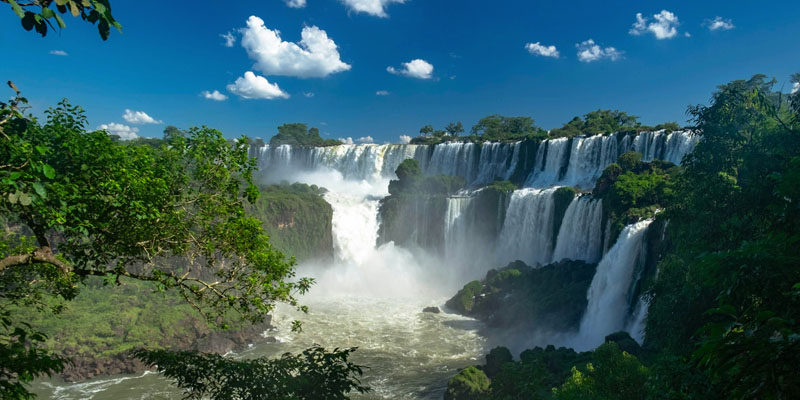
Argentina’s main economic activities are:
- Agriculture. Much of the economy of this country depends on the export of grains, such as soybeans (it is one of the three main producers and exporters in the world), wheat, sunflower, corn, barley and sorghum. Since its territory presents a great variety of climates and rainfall, this makes possible the sown of a variety of products such as vine, olive, cane, cherries, peanuts, linen, tea, nuts, cotton, yerba mate, citrus, vegetables, tobacco and legumes.
- Livestock. As for livestock, the main animals that are raised are cattle and sheep, and there is also a great presence of the poultry and pig industry.
- The industry. The main industries are food and drinks, textiles, petrochemistry and automaker.
- Tourism. The most visited places for tourism are the Iguazu cataracts in Misiones, the Expert MORENO glacier in Santa Cruz, the City of Buenos Aires, the Humahuaca Quebrada in Jujuy, the province of Mendoza, the province of Salta, the city of Bariloche in Río Negro and the city of Ushuaia in Tierra del Fuego.
In addition, Argentina is a country with a lot of strategic natural resources such as oil and gas, and minerals such as Silver, gold, copper and lithium.
Its official currency is the Argentine peso, and its main commercial partners are Brazil, China and the United States.
History of Argentina

In the current territory of Argentina they formerly inhabited nomadic populations. Between the end of the 15th century and the beginning of the 16th century, the Argentine Northwest was dominated by the Inca Empire. In 1516, the Spanish explorer Juan Díaz de Solís arrived at the Río de la Plata but was killed with his men by indigenous populations.
In the 1520s the Spaniards continued to explore the area. After the fall of the Inca Empire, Pedro de Mendoza founded Buenos Aires (1536) but had to retire due to food shortages and indigenous attacks. Juan de Garay restored Buenos Aires in 1580, however, for a long time the most dynamic areas remained in the north, such as the Tucumán Governorate.
A good part of the future Argentina was integrated into the Viceroyalty of Peru until 1776, when The Viceroyalty of the Río de la Plata was created focused on Buenos Aires. After the Napoleonic invasion of Spain, in Buenos Aires there was the May Revolution (1810) that formed a Governing Board of the United Provinces of the Río de la Plata. On July 9, 1816, independence was declared. The War of Independence continued a few more years, led among others by General José de San Martín.
In 1826 the first national government was formed under the presidency of Bernardino Rivadavia. Then followed a stage of fragmentation and conflicts that resulted in the establishment of a regime headed by the governor of Buenos Aires, Juan Manuel de Rosas (1835-1852). In 1853 the Constitution of the Argentine Confederation was promulgated that united all provinces except Buenos Aires, which just agreed to be part in 1861.
At the end of the 19th century, the Argentine Republic was organized institutionally, conquered the territories of La Pampa and Patagonia and initiated a process of economic growth accompanied by a boom of European immigration and British investments. In 1916 the first elections with mandatory and secret vote were held.
During the twentieth century democratic governments alternated with military dictatorships. In 1982, a military government entered war with the United Kingdom through the Falkland Islands. As of 1983, governments were democratically chosen and took place serious economic crises, such as those of 1989 and 2001.
Continue with:
References
- Kapapelusz Editorial (SF) The environments of Argentina. https://www.editorialkapelusz.com/
- Ministry of Foreign Affairs (2023) Argentina. Country record. Diplomatic Information Office of Spain. https://www.exteriors.gob.es/
- Ministry of Culture of Argentina (2020) Tango as national identity. https://www.cultura.gob.ar/
- Ministry of Economy of Argentina (SF) The main economic activity in Argentina. https://www.argentina.gob.ar/



